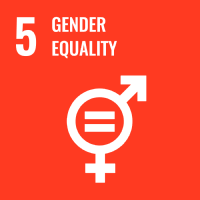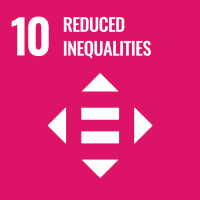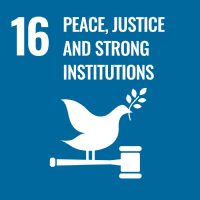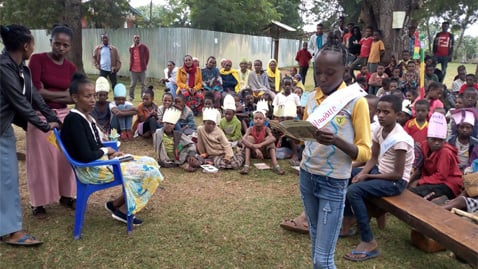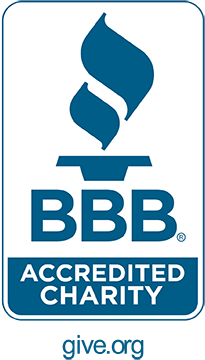
Education
Investing in education to break the generational cycles of poverty and to make a fundamental contribution to children’s well-being

Education
Investing in education to break the generational cycles of poverty and to make a fundamental contribution to children’s well-being
Highlights
Surpassed by 8%
In Rwanda, students participating in a USDA-funded Unlock Literacy activity surpassed the goal for the target average reading score by more than 8%.
3.3 million children reached
All Children Reading: A Grand Challenge for Development — a partnership of USAID, the Australian government, and World Vision to improve reading outcomes for marginalized children in low-resource contexts — reached 3.3 million children in 49 countries.
35,783 youth supported
In Guatemala, our education projects provided 35,788 youth with information, knowledge, and skills to access opportunities and improve their income, empowering them to take control of their future.
Summary
World Vision’s goal is to ensure equitable access to quality education and improved retention and learning for all girls and boys — including those with disabilities — in the areas of literacy, numeracy, and social and emotional learning for improved life opportunities. We seek to remove barriers to education and create a supportive environment for learning where children feel protected and safe from violence.
We work with children and adolescents, schools, communities, and local governments to increase teacher skills, remove harmful social and gender norms that contribute to gender-based violence in schools, build capacity in inclusive education, provide access to reading materials in local languages, and strengthen school management and parental/community involvement in education.
United Nations Sustainable Development Goal (SDG) 5, 10 & 16
We aim to make an impact on children’s lives by working with communities, partners, and local governments to:
- Support play-based early childhood development approaches
- Increase the number of primary school children who can read and achieve a minimum proficiency in mathematics
- Ensure more girls and boys are protected from violence
- Improve adolescents’ education and life skills
- Leverage innovation and technology to increase reading outcomes for children with disabilities and those in low-resource contexts
Education Subsectors

The earliest years of a child’s life are a window of opportunity to support the emergence of literacy and numeracy skills and social and emotional competencies. Early childhood development (ECD) programs are powerful equalizers for children who live in resource-poor settings and play an important role in breaking the intergenerational cycle of poverty. World Vision’s presence at the community level enables us to build on existing local strengths, resources, and positive practices to support this stage of development with holistic, integrated approaches. As young children actively develop, we engage a continuum of actors — including parents, caregivers, teachers, schools, community members, and policymakers — to carry out contextually relevant, play-based ECD solutions and establish the strongest foundation for children’s futures.
Early Childhood Development FAQS:
Why is ECD foundational for children’s learning success?
Early childhood development is a critical ingredient in lifelong learning, establishment of peaceful societies, and the achievement of the United Nations Sustainable Development Goal 4. Research concludes that ECD yields a higher return on investment than interventions that take place later in life. It is increasingly recognized as one of the most important investments that countries and families can make to help children lead productive lives.
What is World Vision’s approach to ECD?
World Vision believes that all children deserve to experience life in all its fullness, and this includes the right to early childhood development (e.g., pre-primary) support. We also know that early learning starts at home with caregivers and parents. Our approach prepares young children for a successful transition to formal school. We aim to reach the most vulnerable children ages 3 to 6 through increased access to safe and stimulating learning environments, positive parenting interventions, play materials (including locally made toys), teacher training, and policy advocacy to increase access to quality pre-primary programming.
What are some examples of World Vision’s efforts and results?

Literacy unlocks human potential and is the cornerstone of development. It leads to better health, better employment opportunities, and safer and more stable societies. However, 58 million primary-school–age children are not enrolled in school; 54 percent of these are girls. According to UNICEF, “an estimated 70 percent of 10-year-olds in low- and middle-income countries are now unable to understand a simple written text.” These children are at greater risk for exploitation, child marriage, and lower income-earning potential. World Vision supports community-based reading programs that increase community engagement in promoting children’s literacy, and help caregivers and families improve home literacy environments.
Foundational Skills FAQS:
Why is learning to read particularly important in the early grades?
Why is it so important to involve communities in supporting foundational skills for children?
What are some examples of World Vision’s work in foundational skills?
USAID Ethiopia/Creative Associates READ II activity: As a sub-recipient to Creative Associates International Inc. under the READ II activity in Ethiopia, World Vision was responsible for engaging parents, youth, and the surrounding school community to create reading camps where children enjoy learning to read. The goal of the READ II activity was to contribute to improving the literacy and educational level of 15 million children in seven target regions. World Vision supported local grantees and communities to establish 5,945 fully functioning reading camps to supplement the literacy acquisition of 815,600 students outside of regular school hours. With the armed conflict in Ethiopia in November 2020, USAID redirected READ II to mount an Education in Crisis and Conflict response in Amhara, Afar, and Tigray. Since 2022, World Vision has worked with internally displaced people and host communities in Amhara to carry out appropriate short-term educational activities that help children heal and resume learning in a humanitarian crisis that killed more than 600,000 people. Parent Awareness Workshops (PAW) were held with 304,789 parents and local education and community officials on psychological first aid and psychosocial support. The outcome assessment revealed overwhelming support for PAW sessions — 75% of Kebele Education Technical Board participants indicated that it was the most important intervention in relation to school enrollment and retention.
USAID Dominican Republic/UNIBE READ (LEER) activity: READ was a five-year project to improve early grade reading instruction and support for 400 schools located in the country’s Duarte corridor. In partnership with UNIBE, World Vision engaged parents from 200 target communities through trained project mobilizers drawn from nongovernmental organizations, informal groups, or faith-based organizations with strong ties to the target communities. World Vision reached 9,000 primary school children through community-based education support programs and supplemental reading materials. At least 4,000 of those children were students with special needs who received specific support to improve their learning. World Vision also involved 200 committees of Parents, Mothers, and Friends of the School and community governance structures in educational support.

World Vision’s adolescent education programming focuses on increasing students’ retention and completion of primary school to support a strong transition to lower secondary school. According to UNICEF, “Although 92 percent of children globally have entered primary school, over 40 percent of these students do not make it to upper secondary school.” Many drop out between upper primary school and secondary school due to myriad barriers that they face as they progress through their education. World Vision’s approach uses a socioecological framework to engage children, teachers, caregivers/parents, faith leaders, and other adults in the community to promote a child-friendly, safe, nurturing, equitable, and inclusive environment where all young adolescents (defined as ages 10 to 14 by the World Health Organization) can learn, remain in school, and safely transition to secondary school to continue their education.
Adolescent Education FAQS:
Why is adolescent education important for lifelong learning?
Early adolescence is a period of complex transitions for many young people, which is compounded in low-resource settings that tend to exacerbate challenges. Therefore, education is critical for providing young people with a sense of stability and security to remain in primary school and move on to attain their secondary education.
What is World Vision’s approach to adolescent education?
World Vision believes in fostering a safe learning environment to increase primary school retention, completion, and transition to secondary, especially for the most vulnerable girls and boys — including children with disabilities. Globally, physical and psychological punishment, verbal abuse, bullying, and sexual violence in schools have been repeatedly reported as reasons for absenteeism, dropping out, and lack of motivation for academic achievement. World Vision is responding to reduce absenteeism and drop-out rates by cultivating school environments that are free from gender-based violence, which disproportionately affects girls.
What are some examples of World Vision’s efforts and results?

History’s largest adolescent and youth population is at a crossroads. Nearly 90% of today’s 1.8 billion young people are concentrated in developing countries where they are disproportionately affected by poverty, violence, poor health, unemployment, and exclusion. With too few opportunities for quality education, gainful work, and participation in community life, half of the world’s young people are neither learning nor working. Stuck and frustrated, they risk becoming a destabilizing force.
World Vision believes that healthy, productive, and engaged youth can contribute to peace and prosperity as positive change agents in their own lives and in their communities. Grounded in this hope, World Vision created two evidence-based Positive Youth Development (PYD) programming models: Impact+ and Youth Ready. We work with families and communities to create a safe and supportive environment of youth-friendly services, economic and civic opportunities, and policies that empower young people to define their identity, strengthen their agency, build their skills and personal assets, gain financial independence, contribute positively to their communities, and establish a lasting sense of belonging.
Youth FAQS:
What is Positive Youth Development (PYD)?
The PYD framework has become the global standard for informing evidence-based youth programming. It focuses on four domains of change critical to achieving a vision of healthy, productive, and engaged youth:
- Assets: Youth have resources, skills, and competencies for success. These can include social and emotional skills, vocational training, critical thinking, and communication.
- Agency: Youth have a positive identity and recognize their ability to change their lives by making their own decisions, planning, and persisting in positive actions.
- Contribution: Youth engage with opportunities to generate positive change in their own lives and to improve the well-being of their communities.
- Enabling environment: The social, normative, structural, and physical environment provides protection, recognition, and support for youth to grow and thrive.
What skills matter most for youth?
World Vision partnered with the World Bank and Institute for Research into Youth Thriving and Evaluation to create a unique skills framework based on six identity dimensions of youth empowered for success at work and in life. These “Youth Superpowers” identities include creative visionary, inclusive collaborator, reflective problem solver, empathetic change-maker, resilient agent, and productive citizen. Each identity is defined by a cluster of powers, which are learned and strengthened through project participation, and include skills (like financial and digital literacy, career planning, and entrepreneurship), competencies (like teamwork, communication, self-care, and problem solving) and mindsets (like sense of purpose, curiosity, courage, and perseverance). In all, 37 powers prepare healthy, productive, and engaged youth for economic opportunities and empower them to contribute to the greater good and to care for others.
What is the role of the private sector?
The private sector is engaged to support youth through:
- Targeted training: informing the content of vocational and soft-skills training to ensure relevancy to local market conditions
- Work opportunities: creating new opportunities for internships, on-the-job training, and employment for vulnerable and excluded youth
- Financial inclusion: developing youth-friendly financial products and services to improve financial education, increase savings, and finance youth entrepreneurship
- Positive adult relationships: mentoring and coaching youth while working to change negative attitudes and norms that impede the full social and economic participation of marginalized youth
What are some examples of World Vision’s work in this area?

Reading is an essential skill needed to succeed in school. However, even before the pandemic, more than 460 million children were identified as having reading difficulties. Since the pandemic, when schools were shut down and education was disrupted, the number of children who lack basic reading skills has risen 26% to over 584 million, according to the United Nations. At particularly high risk are those in low-resource contexts, especially children with disabilities.
Education in the 21st century must leverage innovation and technology to help children learn to read, complete school, and escape poverty. In 2011, World Vision partnered with USAID and the Australian government to launch All Children Reading: Learn A Grand Challenge for Development (ACR GCD) to advance education technology (EdTech) solutions and tools to help address gaps and barriers to child literacy. For over a decade, ACR GCD has implemented solutions for vulnerable children in and outside of school, in crisis, and in emergency situations.
All Children Reading FAQS:
Why is leveraging technology important in the literacy and education sectors?
When applied appropriately, EdTech helps address learning gaps and can help boost child literacy programs and traditional teaching and learning methodologies in and outside of school, in crisis, and in emergency situations.
Highly mobile, EdTech brings the classroom to any location, which was especially important for children affected by school closures due to the COVID-19 pandemic and is currently important for the 4 million children displaced due to refugee crises around the world. EdTech allows more children, parents, and their teachers to receive support and learning materials faster — and in better selection and quality — through the internet and mobile devices.
A recent intervention by World Bank that provided children with low-cost smartphones preloaded with two EdTech solutions — developed with support and funding from ACR GCD — provides compelling evidence that EdTech can improve reading outcomes for children in low-resource contexts in as little as five days, with learning outcomes continuing to improve one month out.
EdTech also enables greater access to teaching and learning materials for children with disabilities. More than 93 million children globally have a disability In countries with high poverty levels, approximately 85% of primary-school–age children with disabilities who are not in school have never attended school, according to the World Bank Inclusive Education Initiative. Factors like a lack of suitable transportation and infrastructure, inadequate teacher training, or a dearth of quality learning resources prevent children with disabilities from attending or fully participating in school, leaving them among the most marginalized in access to education. This challenge has been further compounded by the COVID-19 pandemic and forced migration.
Through ACR GCD, World Vision invested in the most promising EdTech innovations and approaches with a series of challenges and prizes to address gaps and barriers to child literacy. We also partnered with leading education researchers to measure the impact of those approaches and advance innovations with the greatest potential to improve reading outcomes for children in low-resource contexts.
That investment has generated solutions like technology that opens literacy opportunities for Moroccan children who are deaf/hard of hearing; game-changing mobile technology that reaches teachers in remote areas with literacy instruction tips and training; ground-breaking early grade reading assessment for children with sensory disabilities; technology that strengthens education for refugee children; downloadable mobile games to help out-of-school Syrian children gain literacy skills; innovation to expand access to Nicaraguan Sign Language; book creation software; and online libraries like World Around You, Bloom Library, Kitkit School, and Bookshare, containing accessible books.
Read about more solutions below or explore more tools and resources on ACR GCD’s solution hub.
What is open-source technology, and why is it important for EdTech solutions?
Open-source technology is free to use and available for schools, teachers, or parents to share and improve as needed. This makes solutions not only sustainable but also scalable for wider use by more schools, children, and their parents. ACR GCD’s commitment is to identify, fund, and scale the use of open-source solutions to increase access to books and other reading materials to boost literacy, especially for the most vulnerable children.
One successful example of how open-source technology can do this is EduApp4Syria, which was created through our competition to develop smartphone apps that build foundational literacy skills in Arabic and improve psychosocial well-being for Syrian refugee children. Curious Learning, a leading NGO in EdTech, obtained the open-source code for Feed the Monster from GitHub, originally produced in Arabic and English, and adapted it into more than 48 languages, increasing access to the application and amplifying its impact. For example, in 2021, Feed the Monster was adapted into the Nepali language and is currently being used by more than 60,000 users in Nepal. It is also part of a catalog of solutions created by an ACR awardee to help teachers choose the right technologies to support children with disabilities. Curious Learning’s new Follow the Learners dashboard showcases the breadth of Feed the Monster use, now totaling more than 815,000 users globally.
ACR GCD also required all content produced with its funding to be Creative Commons Attribution (CC-BY) licensed, which allows others to use and adapt innovations for free, with appropriate accreditation. This included any books produced or adapted, training and coaching manuals, parent engagement booklets, and more. All CC-BY licensed materials produced by ACR GCD innovators — including books, training manuals, and resources (such as videos and flipbooks) that support teacher, parent, and community engagement in children’s reading — are available for others to use or adapt.
Why is World Vision committed to born-accessible and inclusive solutions?
Born-accessible publishing standards ensure that storybooks are adapted for children who are blind, deaf, or hard of hearing. Producing books in accessible formats — like audio, braille, large print, and sign language — not only can save time and cost when compared to retroactively adapting materials to meet accessibility standards, but also helps publishers and writers think about the broader range of needs of children learning to read.
Through ACR GCD, World Vision extended its focus on inclusive education and technology aid to meet our promise to help all children, especially those with disabilities, to be able to read. ACR GCD was one of the largest innovation funds focused on reading for children with disabilities. In the past decade, over 1.8 million learning materials were distributed in more than 30 countries, including more than 1 million books and ebooks in more than 50 local languages, with a primary focus on Africa and Asia. These materials include storybooks in local sign languages and braille for children in Mali, Rwanda, Philippines, Nepal, Fiji, and other locations around the world.
What are some examples of successful EdTech solutions that have improved literacy for vulnerable children in low-resource contexts?
Below are just a few of the more than 80 solutions ACR GCD innovators have created or implemented in the last 10 years. To explore more, visit ACR GCD’s solution hub.
Books in underserved languages, including sign languages, available for free use and translation through online digital libraries
Millions of children have few to no books in languages they use or understand, which hinders their ability to learn to read and succeed in school. For children with disabilities, the lack of adapted storybooks in accessible formats — like braille, audio accessibility, or sign language versions — hampers development. Children with disabilities struggle to learn to communicate with their families and friends, leaving them isolated from their community. Providing accessible books is essential for these children to live a better life and help them on their path to literacy, which is a proven factor in succeeding in education and escaping poverty.
To address this shortage of books, ACR GCD supports the development and improvement of several online libraries and open-source software that facilitate the creation and availability of accessible books, including:
- Asafeer’s library, an online collection of quality, cost-efficient, and trackable resources and books in Arabic
- Bloom Library, a global collection of books created with Bloom software, an easy tool to create simple books and translate them into multiple languages
- Bookshare, an online library of accessible content for people with print disabilities, such as dyslexia, blindness, cerebral palsy, and other reading barriers
- Global Digital Library, a free, web-based platform that makes high-quality early learning resources available in more than 90 languages, including sign languages
- Let’s Read, Asia’s only free digital library for children, with resources and books that explore important topics and can be downloaded and printed for offline use
- World Around You, a collection of sign language storybooks created through open-source software that enables communities to create and share digital books and literacy content in local and national sign languages
More solutions for children who are blind or low vision
ACR GCD implemented a wide range of open-source solutions to help bridge gaps to literacy for children who are blind and low vision, including:
- eBraille storybooks: ACR GCD innovator eKitabu provided 220 eBraille renditions of storybooks created for the Malawian context. These stories will be uploaded to Orbit readers (a refreshable braille display and stand-alone reader device) across schools for blind and low-vision children in Malawi.
- Digital storybooks in underserved languages: Also under the Begin with Books prize, innovators SIL LEAD and eKitabu are creating digital storybooks in underserved languages in Mali through the addition of human-narrated audio, which is engaging and easy to follow. This provides greater access to reading materials to all children, especially for underserved languages that do not have text-to-speech options.
- Early Grade Reading Assessments in Braille (EGRA-Braille): EGRA is a globally recognized standard for measuring foundational skills for literacy acquisition. ACR GCD innovators, along with monitoring and evaluation specialists from School-to-School, conducted several of the first EGRA-Braille adaptations and baselines in the world to assess children who are blind/low vision. Read more about the EGRA adaptation process and access the baseline reports of the four grantees that have conducted EGRAs for children with disabilities (as well as other grantee surveys).
- Accessible books for individuals with print disabilities via Bookshare: With funding from ACR GCD, Benetech provided human-narrated audio capabilities to Bookshare, the world’s largest digital accessible library and Benetech’s flagship Global Literacy. They piloted this innovation in four primary schools in India, providing students who are blind/low vision with accessible educational content to listen to on low-cost audio devices while simultaneously reading braille. Importantly, the project taught students to read in their spoken tongue, Marathi. Learn more about what Benetech is doing.
- Minimum standards for sign language storybook production: Committed to scaling the sustainable production of high-quality sign language storybooks, ACR GCD — in collaboration with Rochester Institute of Technology/National Technical Institute for the Deaf — is leading the development of minimum standards for sign language storybook production in low-resource contexts.
Solutions in emergency and crisis contexts
Below are a few solutions and tools — all of which are open-source and free to use — as well as links to guidelines for policy makers, designers, implementers, and donors considering the use of EdTech and Information Communication Technology (ICT) to increase reading outcomes for children in crisis or emergency situations.
- Smartphone apps addressing literacy and psychosocial well-being: In response to the Syrian refugee crisis in 2016, ACR GCD — in collaboration with Norwegian Agency for Development Cooperation (Norad), mobile operator Orange, and the Inter-Agency Network for Education in Emergencies — awarded the $1.7 million EduApp4Syria prize to three innovator teams to develop smartphone apps that build foundational literacy in Arabic and improve the psychosocial well-being for Syrian refugee children who are out of or struggling in school. The prize resulted in three apps that helped fill educational gaps for millions of out-of-school children and are now available in dozens of languages: Feed the Monster, Antura and the Letters, and Sema — all available on Google Play. Read in English or Arabic about the impact of two of the apps.
- STEM-focused accessible stories available for free in digital libraries: Through the $100,000 No Lost Generation Summit Tech Prize in 2017, ACR GCD supported Asafeer Education Technologies in the development of 100 audible, leveled, accessible storybook templates that present engaging STEM topics. The books —which spurred a pipeline of quality children’s books in Arabic — are available in multiple languages on various online platforms for reading, downloading, or adaptation, including the Global Digital Library and Asafeer’s digital library.
- Research and evidence-based guidance for leveraging EdTech in emergency and crisis contexts: By funding products and tools and investing in innovative ideas to mitigate education lapses or disruptions due to conflict and emergencies, ACR GCD worked with researchers, organizations, and innovators to analyze solutions and develop guidance around leveraging EdTech or ICT solutions in low-resource emergency or crisis contexts. For example, ACR GCD worked with a coalition of international education and aid organizations to produce the three-module series Leveraging Technology for Education of Refugees and Internally Displaced Persons, which provides guidelines and findings related to the innovative use of technology to expand education opportunities in various locations, including Jordan, Kenya, Pakistan, Lebanon, and South Sudan.
Can I or my organization access, use, or adapt these solutions?
Yes! ACR GCD’s achievements are uniquely and purposefully positioned to strengthen the work of the entire education sector. One of ACR GCD’s main objectives is to provide the education community with resources that will enhance their work and enable them to reach as many children in marginalized and vulnerable contexts as possible. ACR GCD solutions and research are free to use and available to schools, teachers, parents, policymakers, implementors, and others to share and improve as needed.
Education Stories
All Children Reading: Learn A Grand Challenge for Development’s (ACR GCD) legacy is an education technology game-changer in low-resource and crisis contexts to bridge gaps in access to literacy, both in school and out of school, including students with disabilities. ACR GCD also improves reading outcomes through innovations like online digital libraries.
World Vision’s nimble and innovative work under the USAID Ethiopia READ II project, which closed in 2023, included repurposing reading camps to providing emotional support to initiating book-sharing movements. In partnership with Creative Associates International, World Vision supported a vast network of community literacy leaders by helping teachers and families support children affected by the conflict and leveraged art and sports to help students envision brighter futures.
Education Resources
- World Vision’s Measuring Evidence of Quality Achieved (MEQA) digital monitoring and coaching tool enables program staff and local government staff to effectively observe and coach teachers, reading club facilitators, early childhood development caregivers, parents, and others to better support children’s overall learning. MEQA is currently being used in 21 countries, three of which have adopted enhanced observation tools that support coaching for Universal Design for Learning. MEQA is featured in Brookings Tool Finder, which helps to identify digital tools for real-time data collection in education in low- and middle-income countries.

